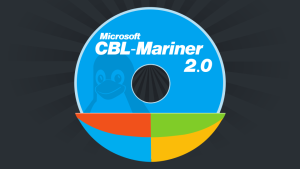
It’s no secret that artificial intelligence (AI) is revolutionizing many industries with its fast capabilities and predictive nature. From writing code to drafting documents, AI has become a tool many professionals leverage to streamline daily workloads and tasks.

AI is also influencing industries on a larger scale, including the mergers and acquisitions (M&A) market. As Kevin Knoepp, operating partner and CTO at Trilogy Search Partners, notes, AI is helping expedite M&As, streamlining key steps within the process that can bottleneck transactions.
“Developments in generative AI and expanding machine learning capabilities are making this an interesting time for mergers and acquisitions,” said Knoepp. “Now more than ever, companies have the opportunity to modernize aspects of the tedious and sometimes grueling M&A process, allowing them to better assess the potential risk of deals, identify and evaluate overlooked targets and once a deal is in progress, better organize and manage deal rooms. With these generative AI-driven capabilities, companies can improve the diligence process for businesses they are interested in acquiring, making the overall M&A process less risky, quicker, and more efficient. However, although generative AI is evolving fast, it still needs to be managed carefully and all output must be analyzed and verified by qualified experts in each applicable field.”
Of course, predicting M&A activity with any degree of certainty comes with its own set of challenges. An increase in M&A activity is typically observed in favorable economic conditions, during periods of deregulation or when businesses have substantial cash reserves. In addition, market volatility and technological disruptions may also create M&A opportunities — both of which are currently being impacted by the increasing adoption of AI. This, in turn, is poised to boost an increase in mergers and acquisitions.
The Evaluation Period
AI is transforming how tech assets are evaluated by enabling more efficient, accurate and predictive analysis. Machine learning algorithms can sift through vast amounts of data faster than human analysts.
These algorithms can automate repetitive, time-consuming tasks, which in turn enables companies to analyze huge amounts of data in short periods of time. This facilitates the identification of trends, fair market value computation and even future performance predictions.
For example, let’s consider a company called Ca$hflow that has developed advanced software for its mobile payment service. Another online banking company is interested in acquiring Ca$hflow and wants to evaluate its software. Here’s how AI could assist in this evaluation:
- Code Review and Quality Assessment: AI tools can be used to analyze the software’s source code. Such tools can detect potential bugs, security vulnerabilities and areas where the code does not follow best practices.
- Software Performance Evaluation: AI can analyze the software’s performance metrics, such as speed, reliability and resource consumption. Machine learning models can be trained to predict the software’s performance under different conditions or loads based on historical data.
- Usability Assessment: AI can evaluate user interaction data to assess the software’s usability. It can identify areas where users frequently encounter issues or those where the user experience could be improved. This data can also feed into machine learning models to predict user satisfaction and churn rates.
- Software Maintenance and Scalability: AI can evaluate how easy it is to maintain and scale the software. For example, it can analyze the complexity of the code and the degree of coupling between different software components. It could also evaluate the software’s adaptability to new data or changes in the operating environment.
- Value Evaluation: AI can help estimate the software’s monetary value by considering all these factors, along with others like market trends, competitor software and potential future uses of the software.
With these vast capabilities, AI can significantly improve and enhance the evaluation of a company’s software, offering insights that would be much more challenging and time-consuming to obtain manually.
The Post-Evaluation Period
Following the evaluation period, AI can assist companies when M&As are underway. More specifically, the technology can greatly aid merging companies as they try to consolidate their technology infrastructure.

To start, companies must perform an audit of all assets, including technology, applications and software being used, addressing such questions as: What tools are actually being utilized? Are some applications duplicated or no longer relevant to operations? AI can be used to automate this repetitive step, giving companies a clearer picture of how their technology assets are being deployed.
Next, companies must identify redundancies to streamline operations. For example, if one company is using Microsoft 365 but the other company uses Google Workspace, it’s important that the companies merge to one suite to streamline their operations, save time and money and ensure things such as communication and file sharing remain consistent.
AI can help with this process by identifying redundancies and helping highlight which applications and systems are not being utilized. It can leverage certain algorithms that identify operational mechanisms, automating labor-intensive tasks such as combing through operational systems and hundreds of software applications. Through this process, it’s also important that the software and technology being used align with business goals. The decision to retain or discard assets should be based on their value contribution, maintenance cost and how well they align with the merged company’s strategic objectives.
Finally, when it comes time to migrate technologies, it’s essential for companies to follow a few key steps. To start, they must set clear goals to ensure a migration is executed smoothly and with the right intentions. A few critical considerations companies should ask before executing a migration include: How much data needs to be moved and where? What applications and systems need to be consolidated? How will this migration impact operations?
Next, companies must identify potential risks with migrations to avoid any surprises or oversight. What could possibly go wrong during a migration? Some of the risks include losing data, not fully migrating a set of data or migrating it to the wrong location.
However, no matter how well-prepared companies can be for migrations, they should always prepare for contingencies. By using a migration tool, companies can ensure a migration is executed safely, efficiently and with as little risk as possible. It’s also advisable to conduct the migration in stages, testing at each phase, to ensure data is not lost or not properly moved.
In addition, AI, through its ability to analyze large volumes of data, can identify unseen patterns, trends and insights that can lead to value-creation opportunities post-acquisition. This includes identifying efficiencies, synergies and potential areas for growth or innovation that may not have been apparent in the evaluation period.
The Future of AI
The capabilities of AI are expanding faster than ever, changing the landscape for multiple industries. Within the M&A space, these capabilities allow companies to move quickly and vet potential M&A targets, streamlining the complex pre- and post-merger process and allowing companies to leverage deeper visibility and better information when it comes to deals on their horizon. As AI continues to evolve and offer more capabilities, a rise in M&A activity is all but guaranteed as more companies continue to close more deals.
By Bailey Smith

